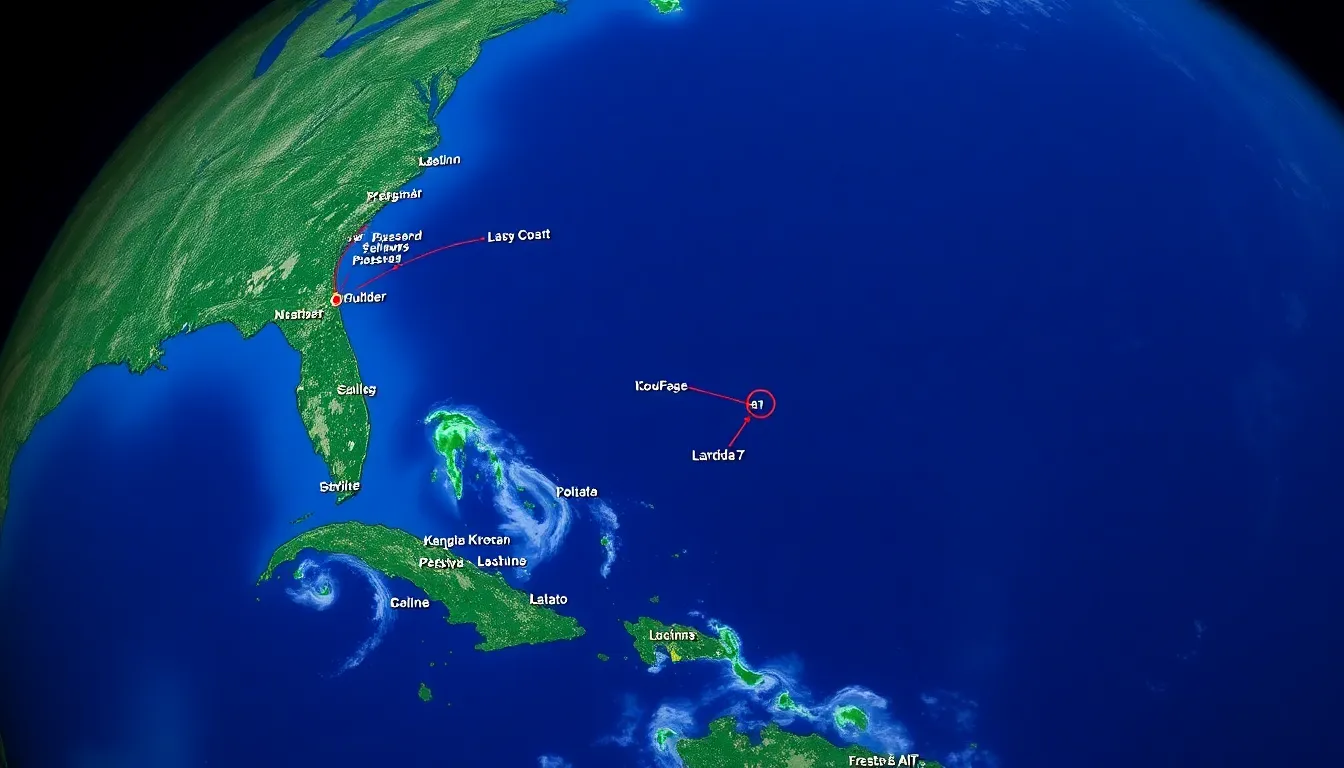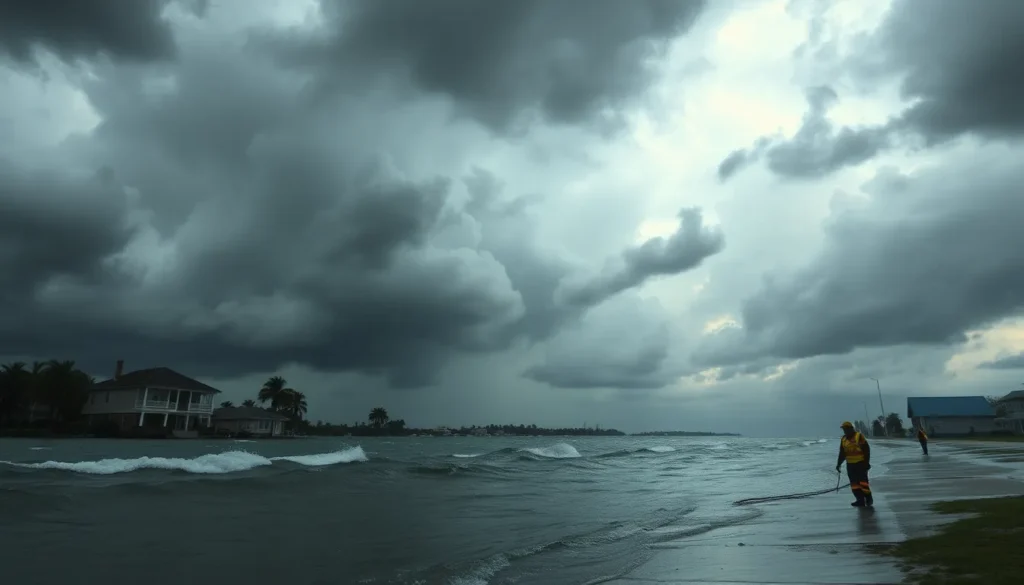As tropical storms develop and gain strength, the question on everyone’s mind becomes when and where they’ll make landfall. The latest storm, Milton, is no exception, capturing attention as it approaches coastal areas. Understanding the timing and impact of such weather events is crucial for residents and authorities alike.
Milton’s trajectory has been closely monitored, with forecasts indicating potential landfall in the coming days. Knowing when to expect the storm helps communities prepare for possible disruptions and ensures safety measures are in place. Stay tuned as we delve into the latest updates and predictions surrounding Milton’s path, offering insights on what to expect as the storm approaches.
Table of Contents
ToggleOverview of Tropical Storm Milton
Tropical Storm Milton has garnered attention due to its rapid development and projected impact. This storm formed in the Atlantic basin and continues to gain strength as it moves westward. Forecast models predict a potential landfall within 72 hours, impacting coastal areas.
The current wind speeds of Milton reach approximately 45 miles per hour, with gusts exceeding 60 miles per hour. Rainfall estimates indicate possible accumulations of up to 6 inches in some regions, posing risks of flash flooding.
Tropical storm warnings are in effect for various areas along Milton’s projected path. Authorities urge residents to stay informed regarding updates from meteorological agencies. Evacuation plans and emergency preparedness measures should be reviewed and implemented as necessary.
Milton’s trajectory may shift, so continuous monitoring is crucial for accurate predictions. Updates on Milton’s progress will be provided as more data becomes available.
Current Weather Forecasts

Current forecasts indicate Tropical Storm Milton’s trajectory and potential landfall are under close scrutiny. Meteorological data provides insights into its path and impact.
Meteorological Models
Meteorological models project Milton’s movement based on several variables, including wind patterns and sea surface temperatures. The GFS (Global Forecast System) and ECMWF (European Centre for Medium-Range Weather Forecasts) models show a possible landfall along the Gulf Coast. These models predict a west-northwest track with a landfall time frame of 48 to 72 hours. Key factors like atmospheric pressure and wind shear play critical roles in refining these predictions. Continuous updates from these models help authorities assess changing dynamics and make informed decisions.
Expert Predictions
Experts emphasize the uncertainty surrounding precise landfall timing and location. According to the National Hurricane Center, based on current data, a landfall near the Louisiana and Texas border is likely. Predictions estimate wind speeds may reach 65 to 70 miles per hour at that time. Emergency management officials urge residents in vulnerable areas to remain vigilant. They recommend preparedness plans, including evacuation routes and emergency supplies, in line with expert guidance and evolving forecasts.
Historical Context
Understanding past storm patterns and the role of climate change is crucial in comprehending Milton’s potential impact.
Previous Storm Patterns
Historical data reveals that the Gulf Coast has experienced numerous tropical storms and hurricanes over the decades. Notable storms include Hurricane Harvey in 2017, which caused significant flooding, and Hurricane Laura in 2020, which made landfall as a Category 4 storm. These events indicate a recurring pattern of severe weather impacting this region, with storms often intensifying rapidly as they approach the coast. Analysis of previous storms shows that the timing of landfall can greatly influence the extent of damage, particularly in densely populated areas.
Impact of Climate Change
Climate change has increased both the frequency and intensity of tropical storms. Studies indicate that warmer ocean temperatures contribute to stronger storms, resulting in higher wind speeds and increased rainfall. Research shows that sea level rise exacerbates storm surge effects, leading to more severe flooding in coastal areas. According to the National Oceanic and Atmospheric Administration (NOAA), data from the past few decades supports the link between climate change and the growing volatility of storm behavior. These factors necessitate enhanced preparedness and rapid response strategies for residents in potential impact zones like those facing Milton.
Preparing for Landfall
Preparation for Tropical Storm Milton’s landfall is crucial for minimizing risks. Residents must stay informed and act promptly to ensure safety.
Safety Measures
Safety measures include securing outdoor items, reinforcing windows, and creating a designated safe space within homes. Families should establish emergency communication plans, ensuring all members know where to go and how to reach each other. Keeping a battery-operated radio, extra batteries, and flashlights is vital for staying updated during power outages. Stocking essential supplies such as non-perishable food, drinking water, medications, and first aid kits is necessary. Following local authorities’ evacuation orders and guidelines plays a significant role in ensuring community safety.
Emergency Resources
Accessing emergency resources significantly aids storm preparedness. Local and state emergency management agencies provide vital information through websites and social media channels. The Federal Emergency Management Agency (FEMA) offers guides on disaster preparedness and recovery steps. Shelters, identified by local officials, serve as safe havens for displaced residents during the storm. Establishing connections with neighbors enhances community support systems. Downloading weather apps and enabling alerts can provide real-time updates on Tropical Storm Milton’s developments, ensuring residents remain informed and ready for action.
As Tropical Storm Milton approaches the Gulf Coast the urgency for preparation grows. Residents must stay informed and heed warnings from local authorities. The projected landfall near the Louisiana and Texas border within the next few days emphasizes the need for readiness.
With significant rainfall and wind speeds expected it’s vital for communities to prioritize safety measures. Securing homes and having emergency supplies ready can make a difference. Continuous monitoring of the storm’s path will be essential in the coming hours.
Staying proactive and following guidance from emergency management can help mitigate risks associated with Milton’s impact.



